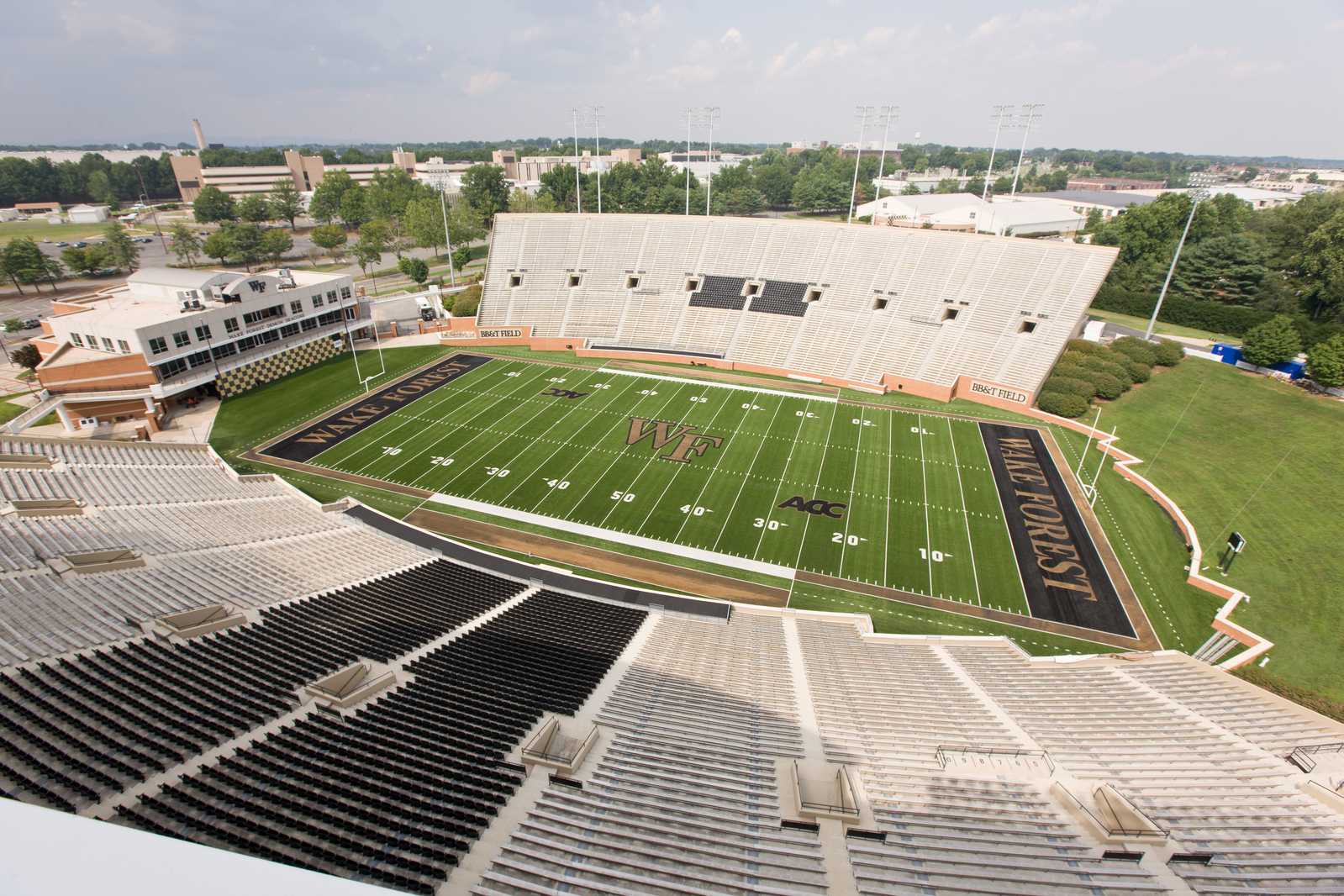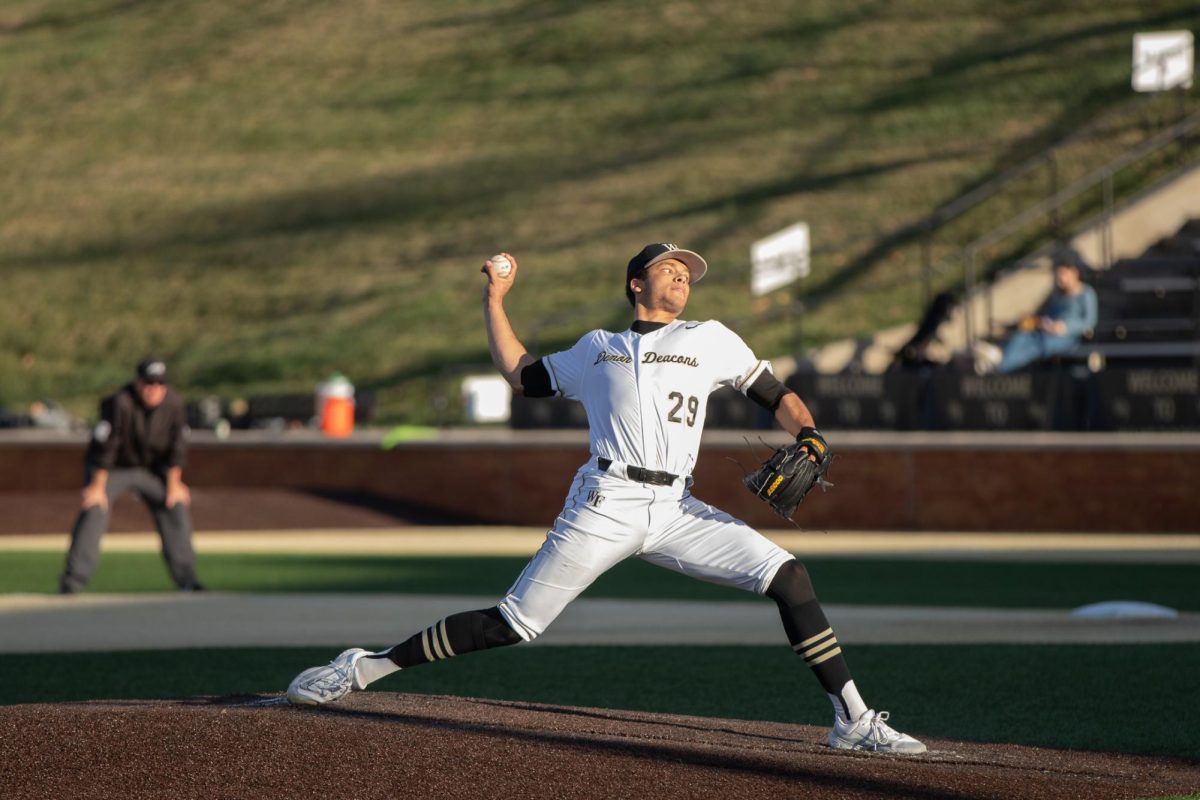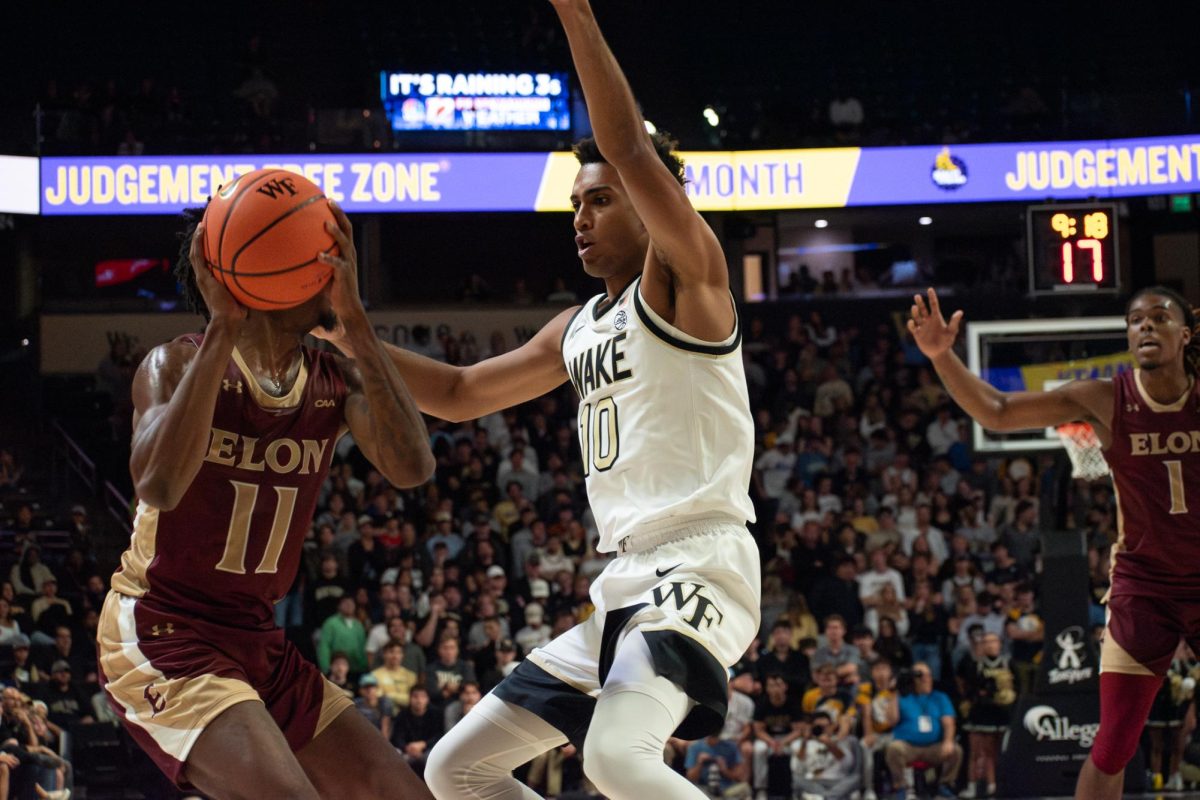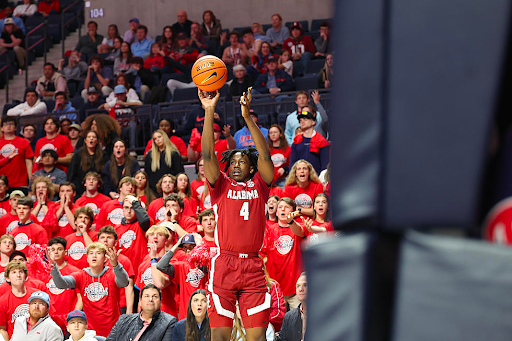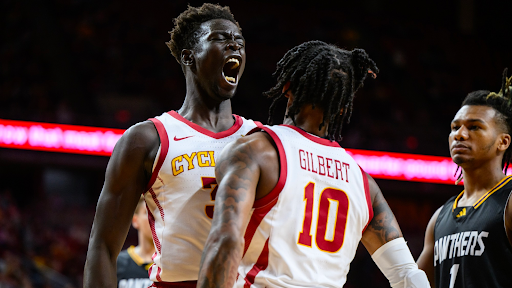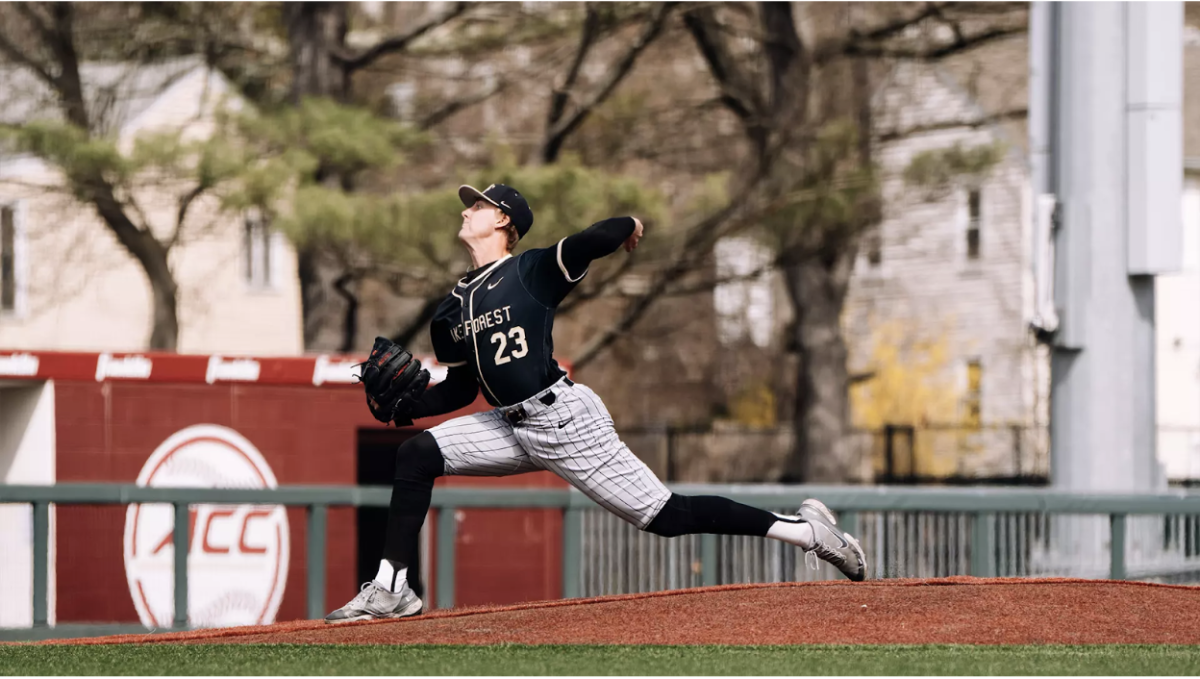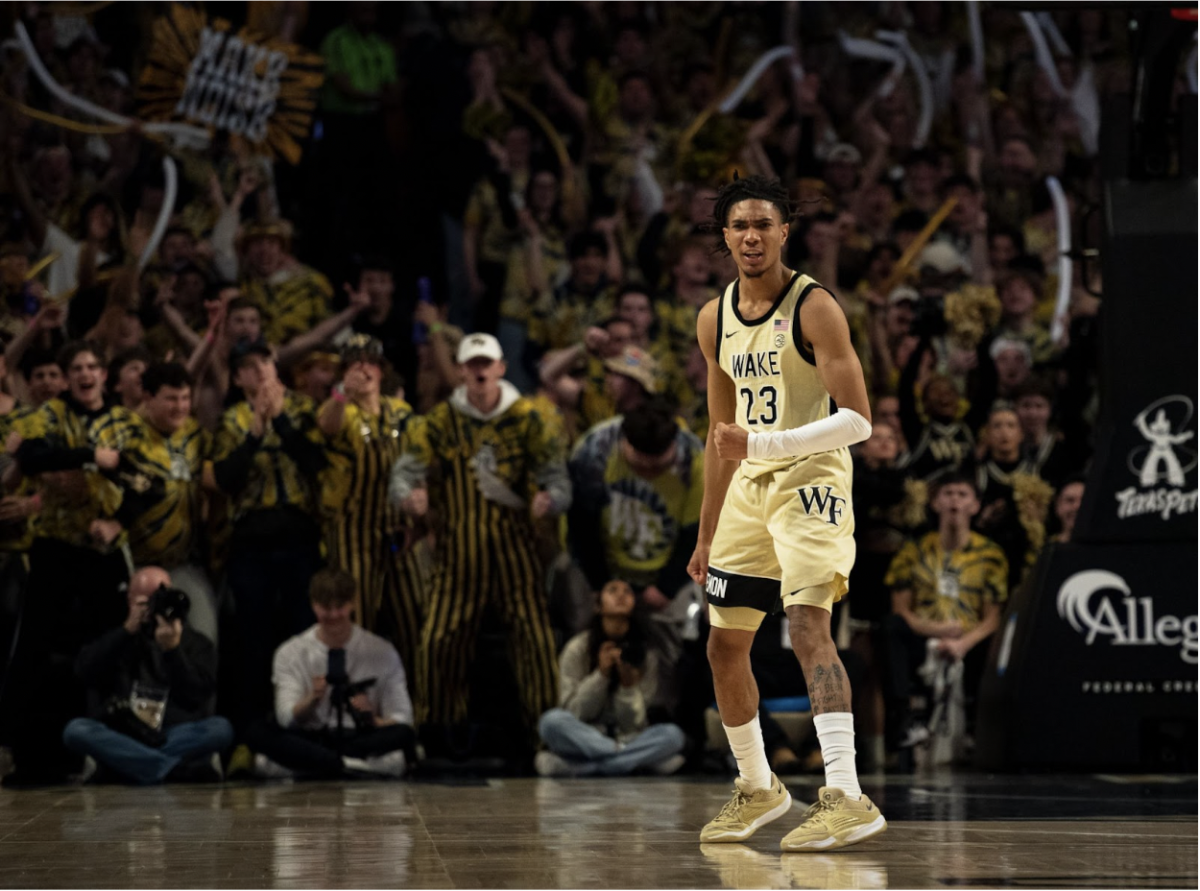The times of watching our favorite athletes and teams compete day-in and day-out feel like they belong to another lifetime. If you’re not interested in cheering on your favorite Korean Baseball team on ESPN at 5:30 a.m. (games played Tuesdays through Fridays) or watching international soccer matches or cornhole championship reruns, you’re probably not doing much watching or rooting at all these days. And while leagues such as the NHL and NBA are finalizing plans to finish their season in a bubble, many signs indicate that the NCAA will have a much more difficult time — for a whole host of reasons — in getting athletes back onto the field to compete come fall.
Over the past few weeks schools across the country, including Wake Forest, have begun slowly welcoming athletes back for summer workouts. Football programs in particular have encountered mixed reactions — from coaching staff members, players, their families and the public — for doing so. Many believe that things are moving too quickly, especially considering that, at this time of writing, confirmed COVID-19 cases are rising across 40 states (according to the Associated Press). The Clemson football program, which began its offseason work less than a month ago has already had 37 players test positive for the virus, nearly a third of the team’s roster. Other programs, chiefly those located in southern states that have been hit especially hard by the virus as of late, such as Kansas State and Louisiana State have reported similarly frightening high numbers of positive tests among players and coaching staff members alike. South Carolina Governor Henry McMaster has gone so far as to state that “if these numbers continue to rise and the danger persists,” he will not allow college football games to be played in the state, per Yahoo Sports.
There is significant concern that conducting a traditional season will put the health and safety of college-athletes, as well as larger college-communities, at increased risk of contracting COVID-19. Playing out the fall sports season within a bubble to mitigate these risks is not an option for NCAA programs. On college campuses, where players eat, sleep and breathe alongside thousands of classmates, it will be impossible for these programs to seclude their athletes completely. Faculty and staff coming onto campus before returning home to their families each night leaves the door open for the virus to make its way into the student body. Among college students — despite the extensive measures that universities will undertake — it is very likely that the virus will spread quickly, inevitably making its way into the locker-room. Most fall sports — football, soccer, volleyball and field hockey — cannot be practiced, much less played with six-feet between players, meaning the virus could spread between teams.
Worse yet, without any regulating body overseeing the many NCAA conferences in their entirety, the steps that should be taken to ensure maximum safety have been left to the discretion of each individual conference to sort out for themselves. This lack of uniformity in regard to testing and quarantine-protocols, among other measures, will make it difficult for teams to compete across the country as they would under normal scheduling circumstances. Questions regarding travel logistics will also have to be considered by athletic directors.
Coaches have also expressed concern about how to best get their teams into game-shape while minimizing contact between players and team staff members. The once simple formats of workouts and practices will need to be altered considerably to meet distancing guidelines and other safety regulations.
“We all are going to have to adjust, whether that’s how we structure practice, where we stand on the practice field, not sitting in large meeting rooms together, figuring out who rooms with whom, even the way we’re served meals,” said Manny Diaz, head coach of the University of Miami Hurricanes football team.
Student-athletes may face their own difficult decision as they weigh their health and desire to play against the ramifications of sitting the season out. According to an ESPN poll of 73 FBS players, 64 stated that they were uncomfortable practicing and playing before a vaccine is developed. While data shows that the virus is much more serious in its affliction of older generations, some players are worried about long-term health effects on their ability to train and perform, should they become infected. For players with aspirations to play at the professional level, sitting the season out isn’t an option because it would seriously hinder their ability to be scouted by pro teams and hurt their chances of getting drafted.
In order to get fall sports leagues up and running, tremendous amounts of flexibility and ingenuity are necessitated from all parties involved. Each school is taking a slightly different approach, and systems that work well should be copied and implemented nation-wide. UCLA, for example, will have a third-party health official at all football related activities who will guarantee that necessary safety measures are being followed. Additionally, the school has set up an anonymous hotline where players can report any concerns they have about unsafe practices or staff members who they believe are putting others at risk. Such measures, alongside the ability of wide-spread testing will be helpful, but a great deal of responsibility falls on the players themselves. Quarantining at the first signs of illness and making responsible choices off the field are essential steps players must take to ensure their own health and safety, as well as that of their teammates.
At the end of the day, the health and safety of the student-athletes must come first. If holding seasons in the fall puts players and the wider college-community at an increased risk, then school executives and athletic directors need to be able to make the difficult decision to postpone or cancel activities and seasons. Some schools have already taken such drastic measures. Division II Morehouse College cancelled all of their fall sports seasons.
“Like all of the decisions we’ve made related to COVID-19, this was a difficult one but was made with the health and well-being of our students and community in mind. It follows my intention to maintain a safe campus in hopes that our students will be able to return in August,” said Morehouse President David Thomas.
Division-3 programs at Bowdoin, Mount Holyoke and Amherst colleges have also cancelled fall sporting seasons.
For larger institutions such as Clemson and Oklahoma State (OSU), officials are much more hesitant to pull the plug on the season. OSU Head Coach Mike Gundy put it bluntly, saying that a season is necessary “because we need to continue to budget and run money through the state of Oklahoma.” A lucrative television deal, and the absence of ticket revenue (if there are even fans at all) are compelling enough for Division I programs to weather on, even after multiple confirmed positive cases (OSU has 14 as of the time of writing).
Whether institutions have their students’ best interest at heart, or are preoccupied following the money, has become a hot topic of debate. When the Arizona State University president was quoted saying that, if the fall semester began today, there would be no online classes, defensive back Malik Hausman tweeted “So why me and my team on campus then?”
Time will tell if conditions across the country are better come fall. If they are, officials insist that they are optimistic that sports seasons can be carried out in a safe manner. Whether or not a school can, in good faith, allow their teams to compete will depend on how well the school and the larger community deals with outbreaks and handles containment. It is entirely likely that games, if they do return, will look unlike anything college sports fans are used to. From empty stadiums, to shortened seasons, to the transposition of traditionally fall sports seasons being played out in the spring, nothing has been taken off the table.
For now, fans can only speculate if these seasons will actually take place and what they will look like, if they do. As conditions change, new outbreaks occur and officials alter health and safety regulations, programs will be forced to adapt their models for practicing and playing in accordance. There is no playbook for how to proceed, and the path forward looks as uncertain as ever; it will be nothing short of remarkable if seasons are played out and champions are crowned. Sports fans nation-wide would love to cheer, and colleges and universities would love the associated revenues these programs pull in, but do the rewards merit the risks?

